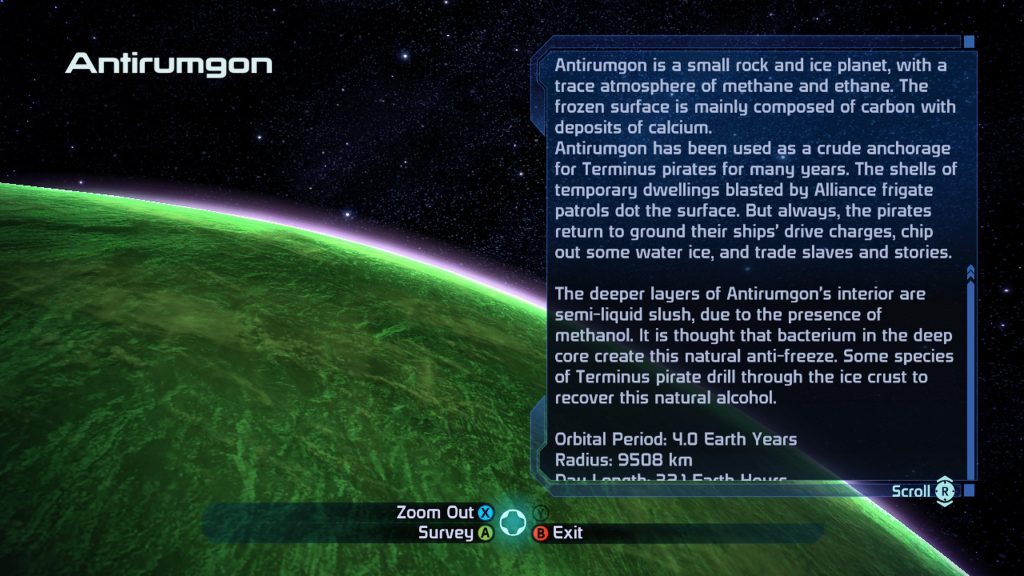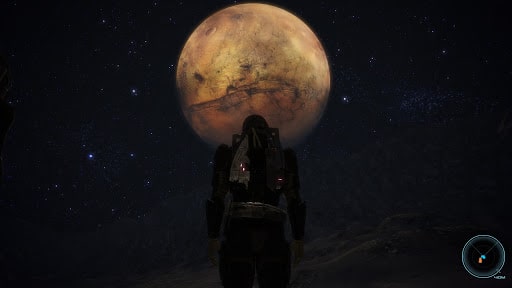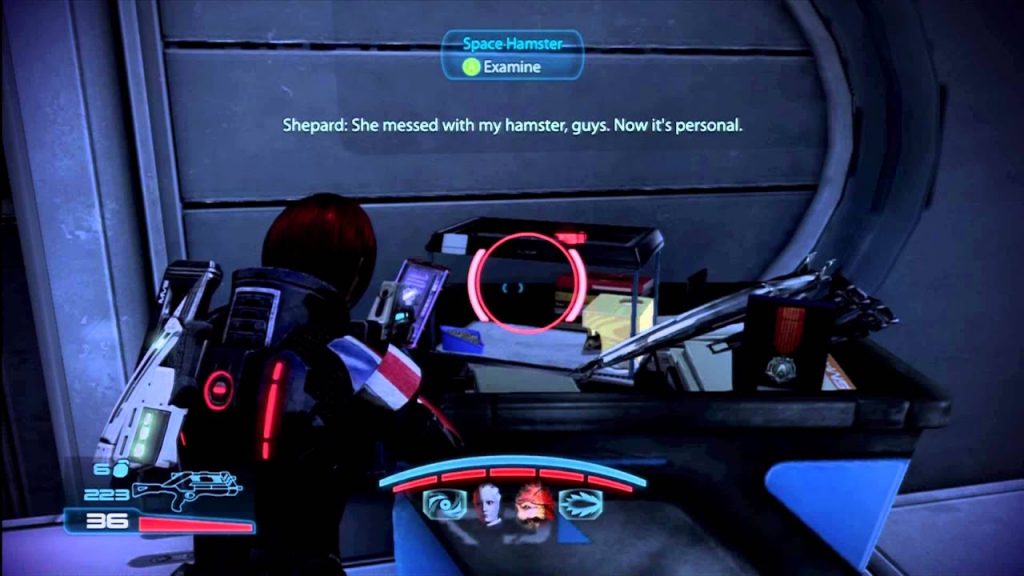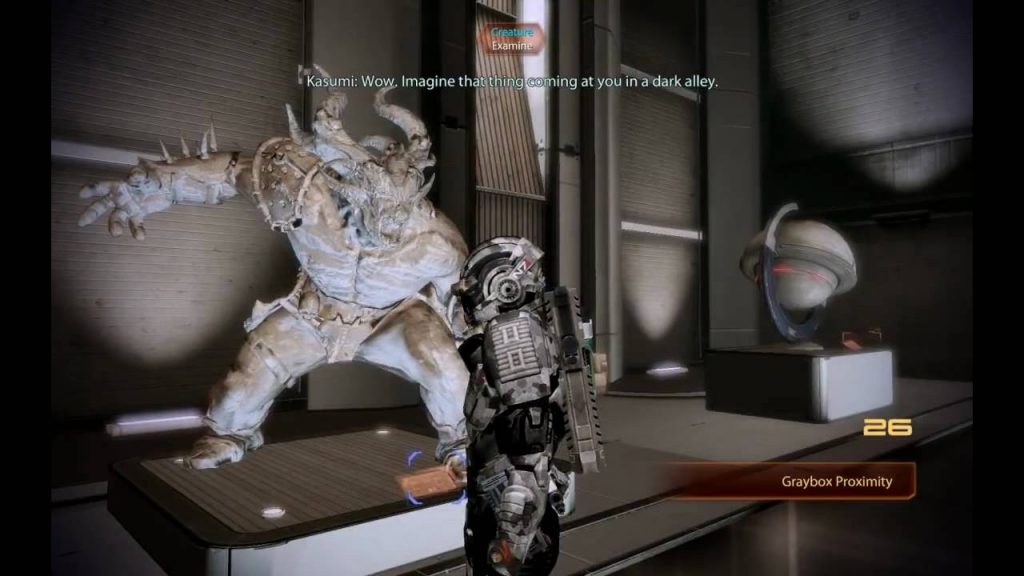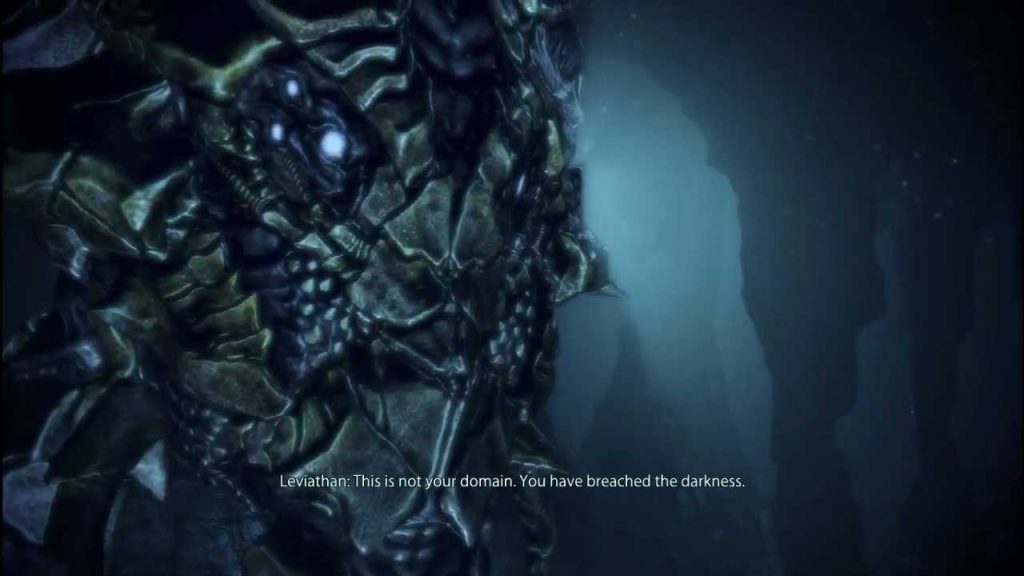In the original trilogy, you play Commander Shepard. Your journey involves confronting the mysterious Reapers and uniting the races of the Milky Way against the impending threat they pose. You travel to multiple planets, meet hundreds of characters, and make decisions that affect entire species. But you also make lifelong friends and take some time to wind down. To stop and smell the roses you’re fighting for. Here are some fun things you might have missed in your play. And if you haven’t played the trilogy yet, here’s some interesting stuff to watch out for.
Refund Guy
You first meet him in ME1, close by Conrad Verner in the Citadel. He’s demanding a refund on his purchase, and the turian shopkeeper isn’t budging. He’s still asking for his refund in ME2, but near the warehouse this time. You can find him still pestering the shopkeeper for his refund in ME3. The shopkeeper finally gives up at this point, and Refund Guy is gobsmacked when he gets the 15 credits he’s owed for a toaster oven. We wonder if it was worth it.
Shifty Looking Cow
You find this six-legged cow-like creature on the planet of Ontarom in the Newton system. An innocent alien animal? Hardly. Unlike the others of its species, this one has a Talk option. It doesn’t actually talk if interacted with, but it follows your Shepard around… and you’ll find your credits slowly decreasing if you turn your back on it. There’s no way to get back what you’ve lost, either, as killing it just leads to it respawning. Look at those grabby little hands.
The Maker
At the very beginning of ME1, during the mission on Eden Prime, you might be able to open a locked shed with two scientists inside. On confirming that you’re human (and not murderous Geth), one of them will exclaim “Thank the Maker!” The Maker is one of the main deities from Bioware’s Dragon Age games, the first of which was released right after Mass Effect. This exclamation is quite common among believers in the Dragon Age universe.
Survey Results
Upon surveying the planet Junthor, in the Gagarin system, it is described as having the ruins of a spacefaring civilization near the equator. It has a tall pillar in the center with descriptions that defied translation for centuries. When decoded, the carvings read “Walk among these works, and know our greatness.” This could be a reference to Percy Bysshe Shelly’s poem Ozymandias. The scratchings on the back read “monsters from the id”–which is a reference to the hugely influential sci-fi film Forbidden Planet. In the same system, the small ice planet Antirumgon is a favorite of Terminus Systems pirates. They drill into the planet’s crust to retrieve the bacteria-produced methanol present there. Given the planet’s name… get it? Anti-rum-gone? In the Hoc system, the frozen planet Prescyla has a message carved into it in Batarian by a pirate gang’s ship-mounted laser weapons. Each letter a hundred meters wide, it proclaims the skill and virility of a certain Captain Zaysh. A smaller message nearby concerns the doubtful parentage of all humans. It would seem graffiti remains graffiti wherever you go.
Probes Away
In the second game, Shepard can search for resources by sending probes to various planets. They are assisted in this task by EDI. If they launch a probe at Uranus, they just get a pause and a weary “Really, Commander?” Trying again does succeed, but not before you hear a long-suffering sigh…
The Great Rift
When viewing the planet of Klendagon in the Century system, a massive trench of some kind is visible cutting through a good portion of the surface. The in-game text describes it as having been created as the result of a glancing blow from some incredibly powerful weapon. (Later, in ME3, this is revealed to be the Derelict Reaper!) Interestingly, this trench is also visible on the moon in the Dragon Age games. In reality, this is a mirror image of the surface of Mars. This rift is actually Valles Marineris, an entirely natural geological formation.
Grim Terminus Alliance
In ME2 you can meet a games vendor on the Citadel who defends an apparently controversial title called Grim Terminus Alliance, in which you can apparently own slaves and beat them. (What would the acronym for that game be?) It turns out your synthetic squadmate Legion is a bit of a gamer, too. He plays the World of Warcraft clone Galaxy of Fantasy, Grim Terminus Alliance, and a title called N7 Call of Honor: Medal of Duty. (We can’t imagine what that might be riffing off of.) In GTA, he has achievements for a playthrough with no slave deaths, and for killing over a hundred quarians… something you want to share with the rest of the class, Legion?
Space Hamster
In ME2, you can buy a Space Hamster for your cabin on the Normandy SR-2. If interacted with, it makes a cute squeaking noise. It gets misplaced for a bit during the Alliance’s retrofits, but you can find it in ME3 near where Jack used to hideout. Shepard’s clone tries to throw it away during the events of the Citadel DLC, and Shepard doesn’t take that well, telling it to “Go for the eyes!” if anybody tries something funny. This is a reference to a character from Bioware’s Baldur’s Gate games called Minsc, who carries what he calls “a miniature giant space hamster.” You can often hear him telling it to “Go for the eyes!” in combat, and it squeaks if you try to remove it from his inventory. (Interestingly, Tali will tell her combat drone to “Go for the optics!”)
Rossum’s Universal Robots
During the Hahne-Kedar sidequest in ME2, you head to the planet Capek to shut down a robot rebellion. This is a pretty obvious reference to Karel Capek, the playwright who gave the word “robot” its current meaning in his play R.U.R., though the beings he calls robots are closer to artificially grown humans. In this Robots-as-Menace play, a rebellion led by such robots leads to the extinction of humanity and their replacement by a robot population.
A Bird, A Plane
Cerberus Daily News has an article about the destruction of a planet called DC1938. The spaceship Kent managed to pick up the lone infant survivor of this tragic event. The atmosphere of this planet was recorded as being 65% nitrogen, 20% oxygen, and 15% krypton. This couldn’t be a more obvious reference to Superman from the DC Universe, whose alias is Clark Kent. He also shares the backstory of being the lone survivor from his planet.
One Universe
While completing Kasumi’s sidequest, you might see a fearsome-looking statue in Donovan Hock’s vault. This is an Ogre from the Dragon Age series! Interestingly, mounted krogan heads can be seen in the Mark of the Assassin DLC in Dragon Age 2 and in multiple places throughout Dragon Age: Inquisition. Cole, a character from DA:I, often makes references to events from the Mass Effect series. Like so: “The cow sometimes takes your gold,” clearly referring to the Shifty-Looking Cow. And “It always had a soul. The question is the answer,” referring to the question asked by the Geth that led to their eventual conflict with the Quarians (“Does this unit have a soul?”)
Advertisements
Only the super-observant will have caught this one, but during the car chase in ME2’s Lair of the Shadow Broker DLC, it’s possible to see a Wanted to be posted for Jack. Ilium is home to other iconic adverts, too, such as “There are some things omni-gel can’t fix. For everything else, there’s…” Mastercard, which is apparently still around two centuries in the future. Citadel adverts are personalized to the target customer, too, so your Shepard gets confronted with “Shepard, you’ve recently been dead. Don’t you deserve a fine silk burial robe?” The ad for the 14-hour all-elcor production of Hamlet is also quite funny. “Insincere endorsement: You have not experienced Shakespeare until you’ve seen it performed by elcor.”
Ardat-Yakshi
These are asari with a genetic abnormality that kills everyone they attempt to meld with. Their name is a nod to world legends. The ardat-lili is a Sumerian succubus-like storm demon that preys on sleeping men, and yakshis are vampiric spirits from Indian mythology. The powers and methods of the Ardat-Yakshi are a reference to Dracula and similar vampire stories. This is reflected in Morinth, an Ardat-Yakshi Shepard meets in ME2, who arrives at Omega on the Demeter–which is also the name of the ship that carries Count Dracula to England in Bram Stoker’s famous novel.
Freeing EDI
Joker has many thoughts about unshackling EDI, when it becomes necessary to do so near the end of ME2. He makes a reference to 2001: A Space Odyssey (and HAL-9000) when he says “All right, but if you start singing Daisy Bell, I’m done.” He also directly references The Matrix with his next muttered words: “Great. See, this is where it starts, and when we’re all just organic batteries, guess who they’ll blame?” In the movies, it’s exactly human meddling that caused the machines to move from using humans as computing resources to using them as, well, batteries!
Jurassic Park
During a sidequest in Mass Effect 3, Shepard finds a portion of kakliosaur skull preserved in amber and suggests that DNA from it be used to create living kakliosaurs. We have a whole franchise of thriller movies about why bringing dinosaurs back isn’t a good idea. Shepard didn’t stop there, of course. They wanted the krogan to ride these beasts into battle against the Reapers. Now that’s a terrifying image!
Lovecraft
The Leviathan DLC for ME3 has a questline that closely mirrors H.P. Lovecraft’s incredibly influential work The Call of Cthulhu. In both, ships’ crews are lost and turn up dead. There are artifacts with anomalous properties and grim histories. And there are terrifying, gigantic, unfathomably ancient undersea-dwelling entities with the ability to control people’s minds from afar. Cthulhu fhtagn.
Indiana Jones
The Citadel DLC for ME3 is one of the players’ all-time favorites–probably because it’s stuffed to the gills with fanservice and fun little references. You get to fight an evil clone, participate in arena battles, and have a party with your best friends! While completing the DLC’s main quest, you pass through the Citadel Archives, where you see an item labeled as a religious object from Earth. Look closer and you might be able to make out the Ark of the Covenant from Indiana Jones and the Raiders of the Lost Ark.
Chess Rivalry
In the Citadel DLC, you also get to view a game of what’s essentially asari chess, played between Samantha Traynor of your crew and her long-time rival Polgara T’Suzsa. This is a reference to real-world chess grandmaster Susan Polgar–who spells her name Polgar Zsuzsanna in her native Hungarian. It’s also a reference to the character Polgara from David Eddings’ The Belgariad, who is also immortal and a highly skilled manipulator… ideal for Polgara, who is a strategist by profession. A remastered version of the original trilogy will be out soon. Pre-order it here. Want more Mass Effect? Check out our roundup of the best companions in Mass Effect 2.

